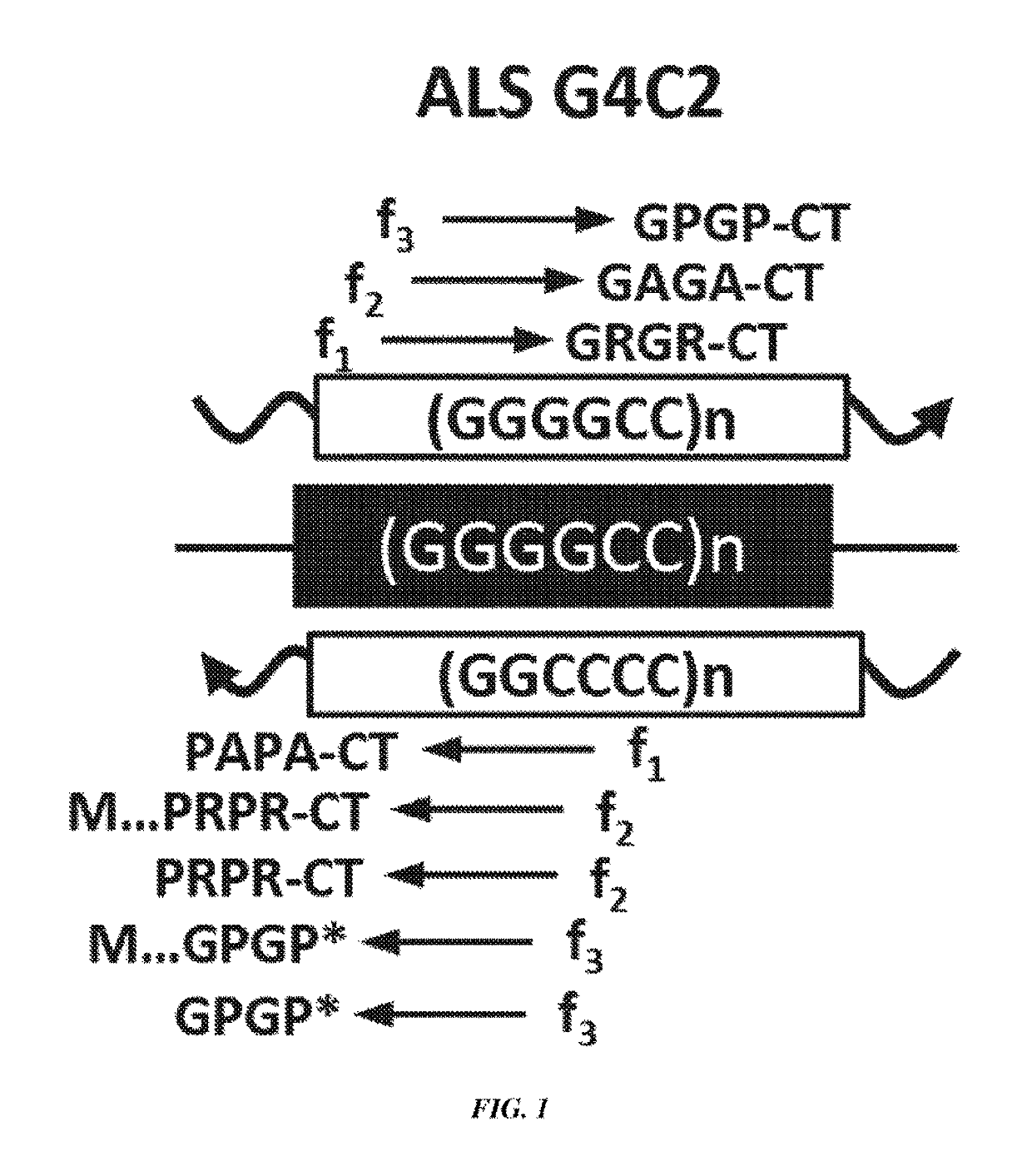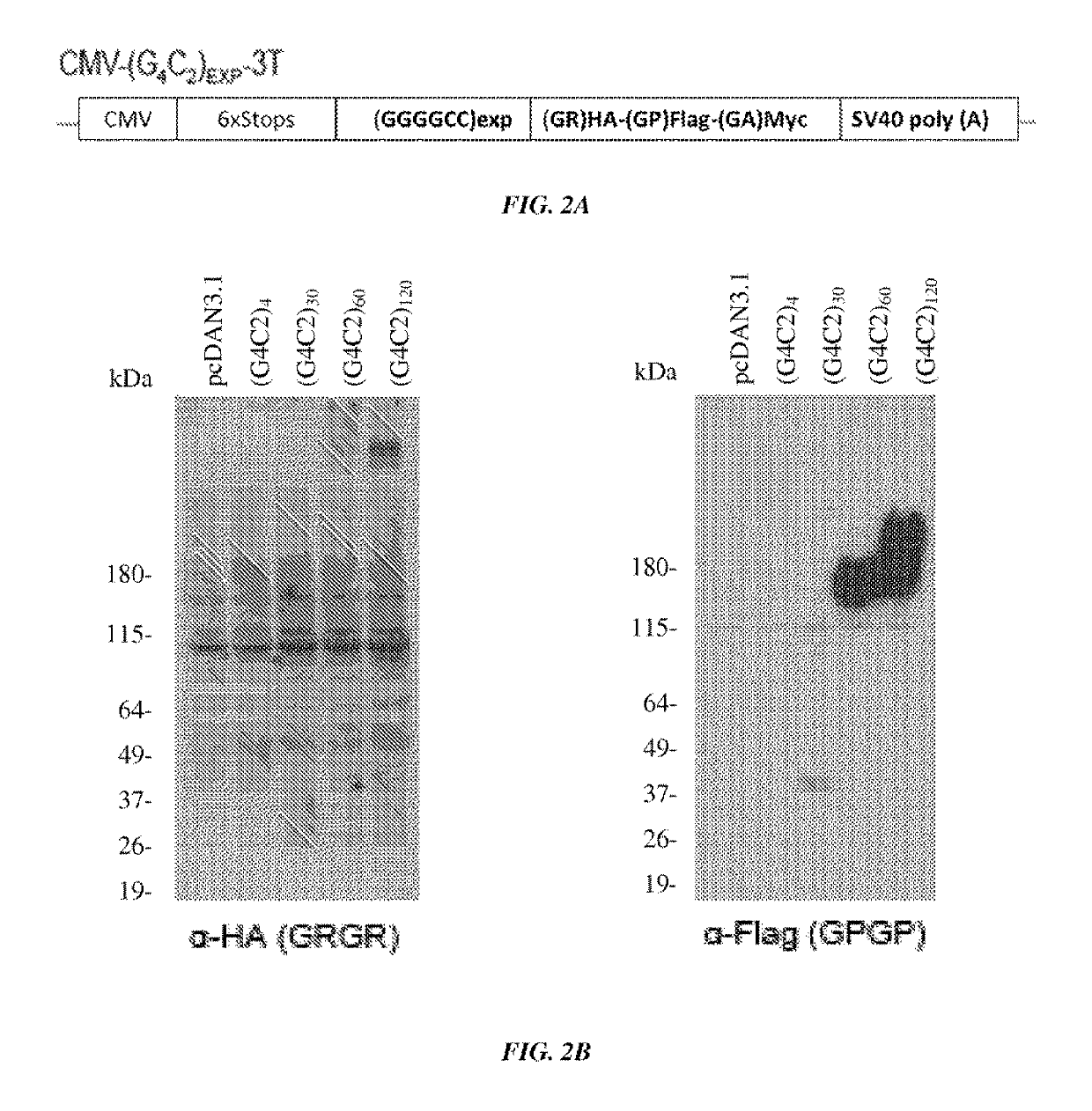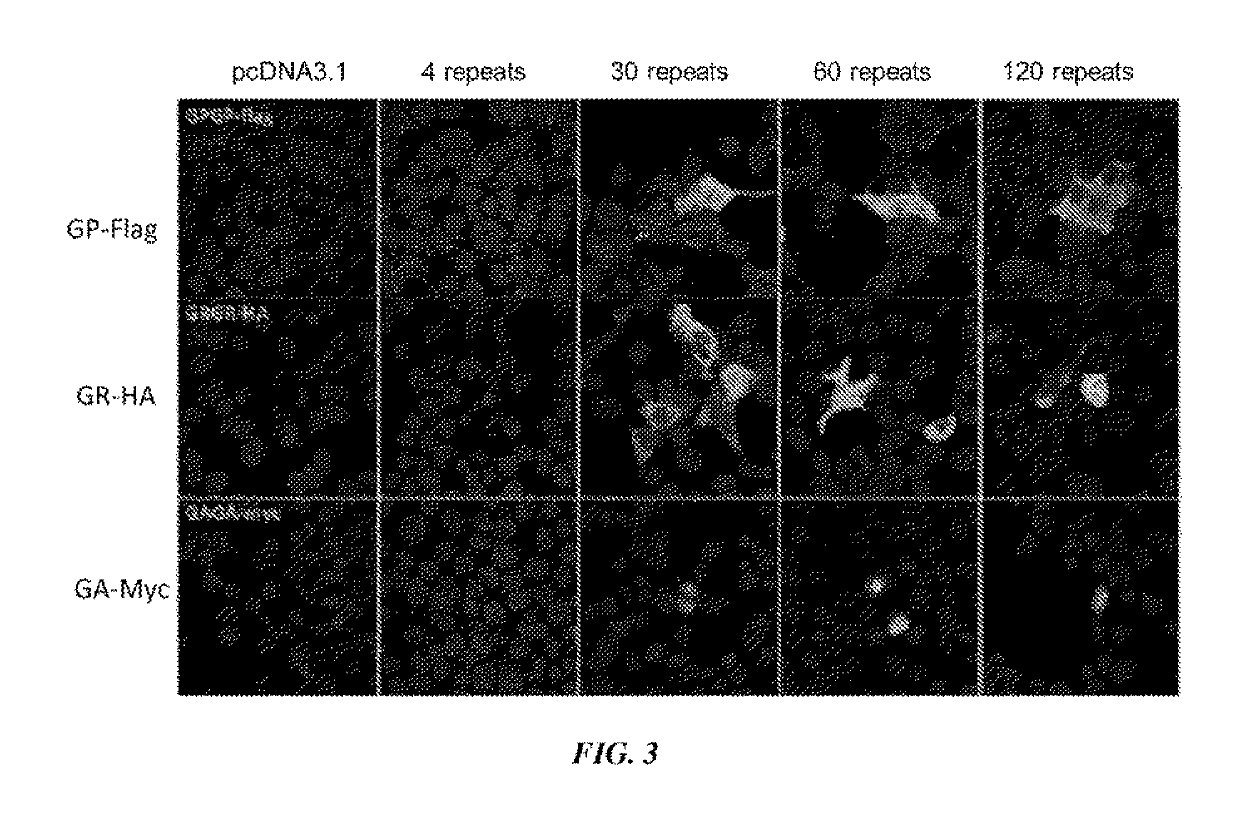Use and treatment of di-amino acid repeat-containing proteins associated with ALS
a technology als, which is applied in the field of use and treatment of diamino acid repeatcontaining proteins associated with als, can solve the problems of severe behavioral changes, no cure, and most subjects are not able to walk, and can not get out of bed on their own, so as to achieve the effect of stabilizing or decreasing the level of diamino acid repeatcontaining proteins and high elevated levels
- Summary
- Abstract
- Description
- Claims
- Application Information
AI Technical Summary
Benefits of technology
Problems solved by technology
Method used
Image
Examples
example 1
[0143]A construct containing a CMV promoter, a (GGGGCC) expansion motif containing either 4, 30, 60, or 120 repeats of GGGGCC, and an HA, FLAG, or MYC tag were transfected into cells (FIG. 2A). It was shown by western blot that poly-(GR) and poly-(GP) proteins were produced in cells transfected with constructs containing 30, 60 or 120 repeats of GGGGCC (FIG. 2B). It was further shown using immunofluorescence of cells that GP-flag, GR-HA, and GA-Myc proteins were expressed in cells transfected with constructs containing 30, 60 or 120 repeats of GGGGCC (FIG. 3). These results show that GGGGCC repeat regions are capable of initiating translation independent of an AUG start codon (repeat-associated non-ATG (RAN) translation), and that poly-(GP), -(GR), and (GA)-repeat proteins are produced.
[0144]Antibodies to a poly-(GR) sequence or to the C-terminus of the poly-(GR)-repeat protein were generated. Fluorescent staining using these antibodies showed that these antibodies were capable of d...
example 2
[0151]According to some aspects of the disclosure, di-amino acid repeat-containing protein (such as RAN protein) accumulation in blood and cerebral spinal fluid (CSF) substantively contribute to C9ORF72 ALS / FTD and that plasmapheresis and bone marrow transplantation will reverse progression of the disease. According to some aspects of the disclosure, di-amino acid repeat-containing protein accumulation in blood and circulating CSF infiltrates the brain parenchyma and leads to protein accumulation, neuroinflammatory changes, CNS dysfunction and neuronal death. Aspects of the disclosure are based in part on the following. First, blood brain barrier (BBB) impairment is an early feature of disease in ALS patients (4, 5) and higher rates of ALS and other neurological diseases are found in patients who have had traumatic brain injuries (6). In some embodiments, without wishing to be bound by theory, ALS is in part caused by BBB disruptions that allow for the CNS entry of immune cells and ...
example 3
Introduction
[0158]The chromosome 9p21-linked form of ALS / FTD, the most common cause of familial FTD and ALS identified to date, is caused by an expanded GGGGCC (G4C2) hexanucleotide repeat in intron 1 of chromosome 9 open reading frame 72 (C90RF72) (1, 2). The C9ORF72 mutation is found in 40% of familial and 7% of sporadic ALS cases and 21% of familial and 5% of sporadic FTD patients (3). The discovery of the C9ORF72 expansion has generated substantial excitement because it connects ALS and FTD to a large group of disorders caused by microsatellite expansion mutations (4).
[0159]Traditionally, microsatellite expansion mutations located in predicted coding- and noncoding regions were thought to cause disease by protein gain-, or loss-, of-function or RNA gain-of-function mechanisms (4). Protein loss-of-function has been proposed to underlie C90RF72-driven ALS / FTD because the expansion mutation leads to decreased levels of variant 1 transcripts and potential decreases in C9ORF72 protei...
PUM
| Property | Measurement | Unit |
|---|---|---|
| diameter | aaaaa | aaaaa |
| diameter | aaaaa | aaaaa |
| diameter | aaaaa | aaaaa |
Abstract
Description
Claims
Application Information
 Login to View More
Login to View More - R&D
- Intellectual Property
- Life Sciences
- Materials
- Tech Scout
- Unparalleled Data Quality
- Higher Quality Content
- 60% Fewer Hallucinations
Browse by: Latest US Patents, China's latest patents, Technical Efficacy Thesaurus, Application Domain, Technology Topic, Popular Technical Reports.
© 2025 PatSnap. All rights reserved.Legal|Privacy policy|Modern Slavery Act Transparency Statement|Sitemap|About US| Contact US: help@patsnap.com



